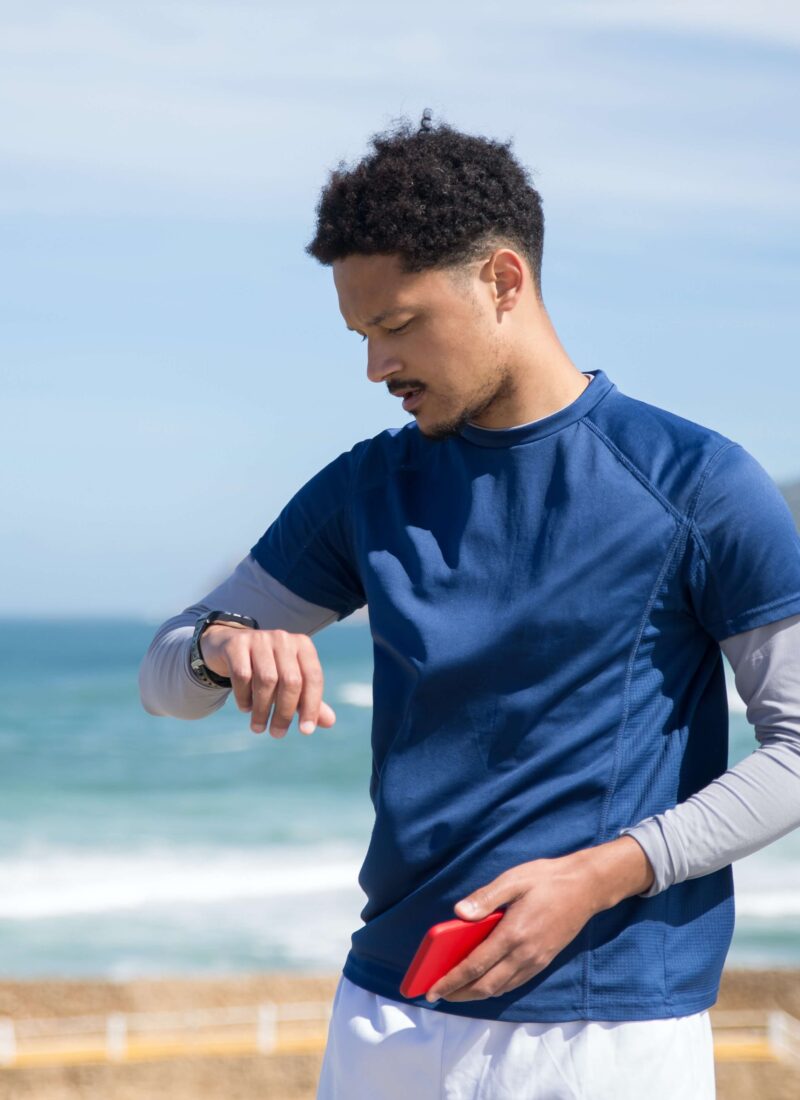Welcome to my blog! In this post, I will talk about what to wear for a 5k run in cold weather, and how to prepare for those months when it’s really cold outside and you want to go out for a run.

A 5K run is a popular and widely recognized racing distance in the world of running. The term “5K” refers to a race that covers a distance of 5 kilometers, which is equivalent to approximately 3.1 miles.
Dressing appropriately for a 5K run in cold weather is crucial to ensure you stay comfortable and perform at your best.
I recently moved from a warmer region to a colder one. So right now, being December, I am experiencing the obstacles and perks of running in the lower 30 degrees (Fahrenheit). Keep reading for my findings.
Dressing appropriately for a 5K run in cold weather is crucial to ensure you stay comfortable and perform at your best.
While many individuals find the crisp, cool air invigorating, there are specific obstacles that must be overcome to maintain a safe and enjoyable running experience in colder temperatures. Running in cold weather poses several challenges that can impact both the physical and mental aspects of a runner’s performance.

Cold weather can cause muscles to tighten, leading to a higher risk of strains and injuries. The reduced blood flow to extremities in chilly conditions can also result in stiff joints, making it crucial for runners to incorporate thorough warm-up routines before hitting the pavement. Failure to adequately prepare the body may lead to decreased flexibility and an increased susceptibility to injuries.
Staying hydrated is essential during exercise, regardless of the weather, and it remains important even in cold conditions.
What To Wear For A 5k In Cold Weather
Maintaining the right balance of clothing presents another hurdle. While it’s essential to bundle up to stay warm, overdressing can result in excessive sweating, which, when coupled with cold temperatures, can lead to discomfort and even hypothermia.

Conversely, underdressing leaves runners vulnerable to the harsh elements, increasing the risk of frostbite and other cold-related injuries.
Striking the right balance requires careful consideration of the weather conditions and choosing layers that can be adjusted as the body warms up during the run.
If you want to go out for a run in cold weather, I am talking lower 30s or below, you need to prepare adequately. You don’t need to spend hundreds of dollars on clothing. If you have an old hoodie that is not for running, use it as a top layer. Use your running shirts under the hoodie. Use what you have, and start investing in one item at a time.
If you live in these cold weather conditions, you must start investing in warm running clothes.
It’s very important to put your safety before anything else. Don’t go out running if the streets are icy. They get very slippery and it’s not safe!
How To Dress For Running In Cold Weather
It’s crucial to dress appropriately to stay warm and comfortable while allowing your body to regulate its temperature.

Here is a list of things I use, it depends on the temperature, right now is lower 30’s (0 Celsius). Bear in mind that I am a person who gets cold easily.
(These items are merely a suggestion, adjust however feels necessary).
- 1. Dress in Layers: Base/Mid/Outer
Normal running shirt as a Base Layer. Then a mid-layer, like a long-sleeved running sweater. Then an Outer layer, like a running jacket (use a hoodie if you don`t have the money to buy a running jacket). If it’s extremely cold, wear leggings and running pants on top.
- 2. Gloves or Mittens
My hands get really cold. If I don’t cover them I get cold very fast, and that impairs my ability to keep running.
- 3. Headwear
I wear a beanie. Don’t go spending a lot of money on a fancy running brand beanie. Any beanie will work. By the way, don’t use your favorite beanies, because they will get trashed.
- 4. Buff
Keeping your neck, mouth, and nose warm is imperative.
- 5. Eye protection
Protect your eyes from the wind. My eyes get watery with the cold.
- 6. Warm socks
I try to wear wool socks.
- 7. Footwear
I don´t run in snow, so any regular road running shoes will do. If you are trying to run in snow, I highly suggest looking for further info on this matter.
What To Do To Keep Working On Your Fitness When It Gets Too Cold To Run
Running in the snow can be challenging, but there are plenty of alternatives that can help you stay active and enjoy the winter weather. Here are some alternatives for staying fit when it’s snowing:
- Resistance training

Use these months to build up your muscles and avoid future running injuries. You can buy some resistance bands and work out from home. I find that working out outside my house works best for my motivation.
- Yoga /Pilates

These are both great for your body and mind.
- Peloton Bike

Great for low-impact cardio. Sometimes there are some great deals on Amazon.
- Swimming

Must be a heated pool, obviously. It’s a great activity for building your aerobic capacity.
- Join a Gym
Gyms usually have running and cycling machines, so basically, you can do almost all of the above-mentioned activities. They are not cheap but try and look for one that is a bit more budget-friendly.
Running In Cold Weather
Maintaining motivation to run in cold weather can be mentally challenging. The allure of a cozy, warm environment indoors may tempt runners to skip their workouts. Overcoming mental resistance and cultivating a positive mindset are crucial for staying consistent with a running routine during colder months.

While running in cold weather offers a refreshing and invigorating experience, it comes with its share of challenges. Proper preparation, including adequate warm-ups, appropriate clothing choices, respiratory protection, safety precautions, and mental fortitude, is essential for ensuring a safe and enjoyable running experience in chilly conditions.
Remember to hydrate properly. To stay adequately hydrated during exercise in cold weather, it’s important to drink fluids regularly, even if you don’t feel as thirsty as you would in warmer temperatures. Pay attention to your body’s signals, monitor your urine color (pale yellow is generally a good indicator of hydration), and consider sipping on fluids that are not too cold to avoid discomfort in chilly conditions. Drinking water or sports drinks with electrolytes can help ensure you maintain proper hydration levels during your cold-weather workouts.
Remember that individual preferences and tolerance to cold can vary, so adjust the layers based on the specific weather conditions. If it’s a particularly cold day, you might need to add extra insulation, and if it’s milder, you can opt for lighter layers. Always check the weather forecast before heading out to ensure you’re adequately prepared for the conditions.




[…] What to wear for a 5k in cold weather […]